Context
A steek is an area of knitted fabric that is designed to be cut. This allows, for example, a sweater to continue to be knit in the round (circular knitting) after the start of the armholes. The steps involved are:
- Cast on and knit your steek stitches;
- Reinforce your steek;
- Pick up stitches at the steek, such as for sleeves, button bands (this article);
- Cut the steek.
Although the edge formed after a steek is cut might be left as a design feature, more often it is used as the foundation for a sleeve or a decorative edging that is knit by picking up the edge stitches that were formed when the steek was knit. This article describes a method for picking up the stitches that is both secure and encourages the steek stitches to lie flat against the body of the fabric.
How to do it
his article assumes that you know how many stitches you need to pick up and the distance apart that those stitches need to be. If you are unsure of this, you may find the companion article ‘Strategy for picking up stitches‘ helpful (this article is in preparation).
Picking up stitches can pull on the stitches in the fabric. Picking up the stitches and knitting a row/round before cutting the steek may reduce the risk of pulling the yarn out of your reinforcement. The illustrations in this article show the stitches being picked up after the steek has been cut.
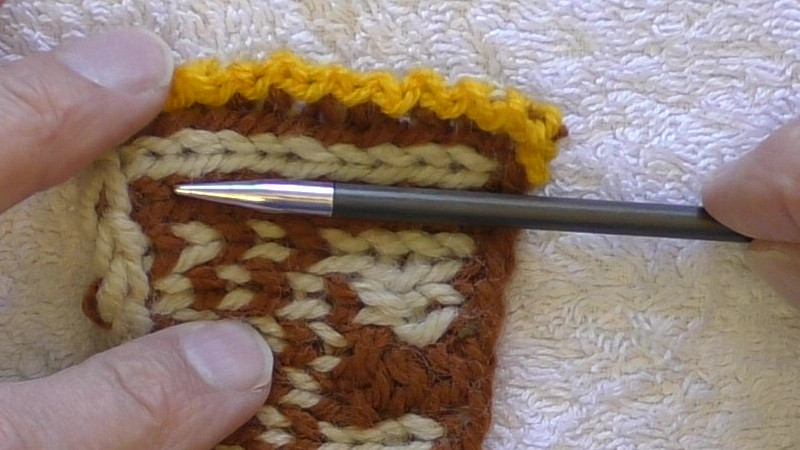
You will pick up the stitches from the edge stitch that you added when knitting the steek.
There are three main ways to pick up the stitch: using two needles, using a crochet hook and a needle, or using one needle. It does not matter which method you use, they all create the same result. You may find one method easier than the others.
Pick up stitches using two needles
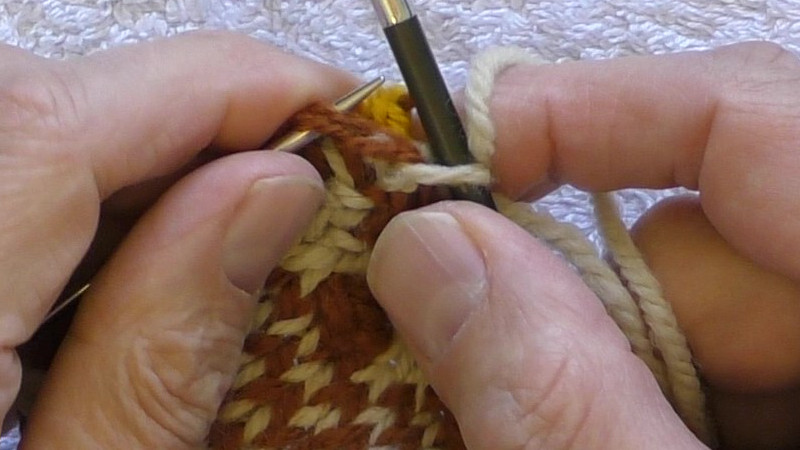
Insert the left hand needle from the left so that it passes under both legs of the edge stitch.
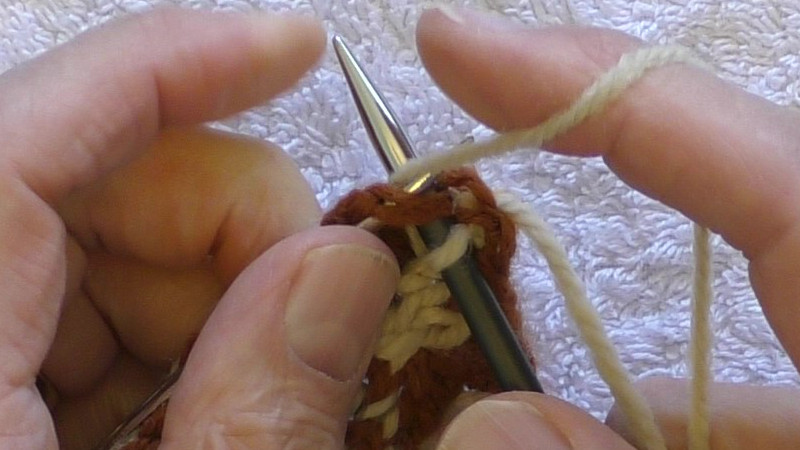
Insert the right hand needle knitwise behind both legs (this will feel like a knit two together – k2tog). Hold the working yarn at the back of the steek. Wrap the yarn round the right needle.
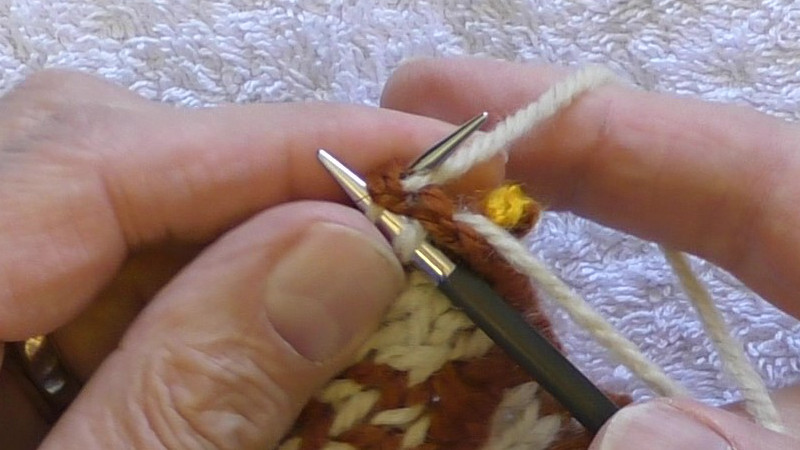
Pull the yarn through to make a stitch.
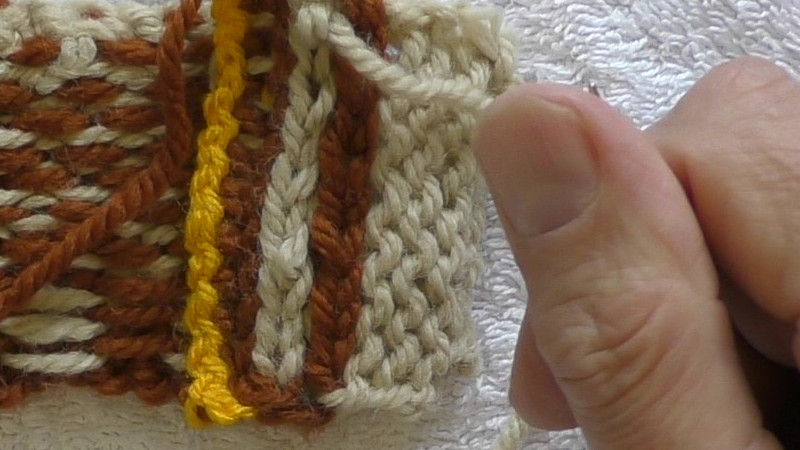
Finish picking up the stitches.
This picture shows the fabric after a few rows have been added to the stitches that were picked up (the light coloured stitches on the right). These naturally lie in the direction of the body of the fabric, and the remaining steek stitches (the three stitches immediately to the right of the yellow reinforcement) fold them selves back to lie against the main fabric. You might want to catch the reinforced edge with a running stitch to avoid it being caught while the garment is being put on and off,
Pick up stitches with a crochet hook
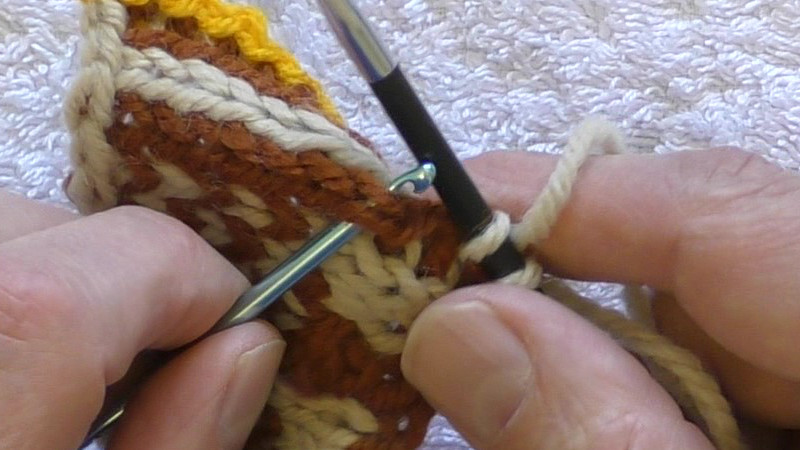
Insert a crochet hook under both legs of the edge stitch that is to be picked up.
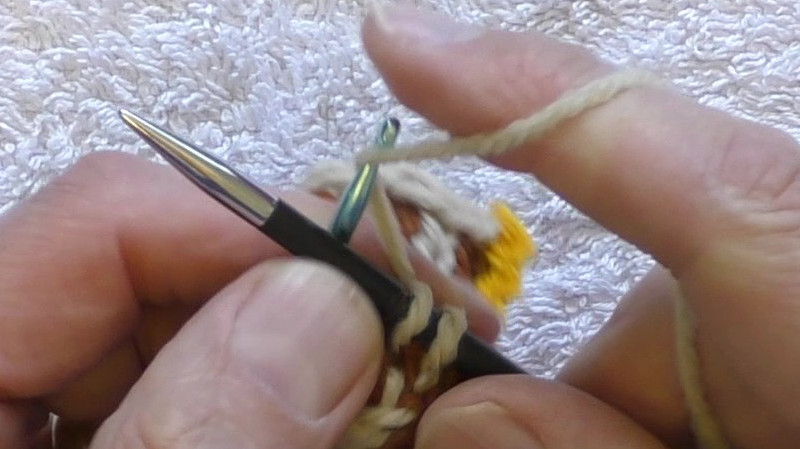
Hold the working yarn at the back of the steek. Pull the working yarn under the stitch to be picked up.
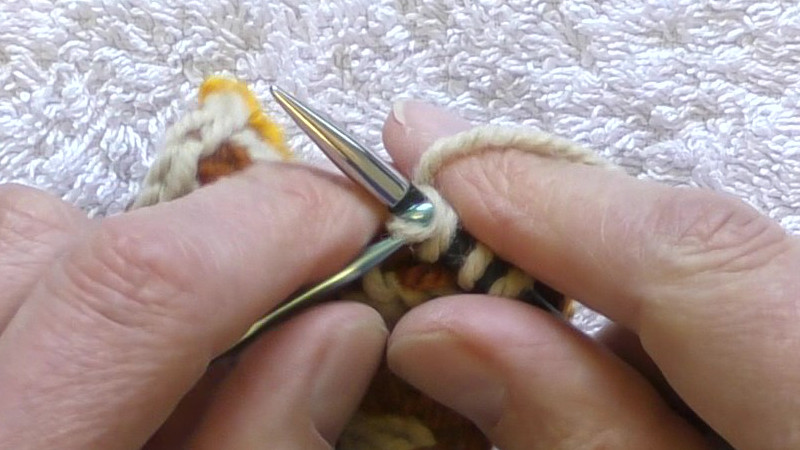
Insert the right hand needle into the loop you have just made, and remove the crochet hook.
Continue until all the stitches have been picked up.
Pick up stitches with a single needle

Insert the right hand needle under both legs of the edge stitch to be picked up (starting at the leg nearest the body of the fabric).
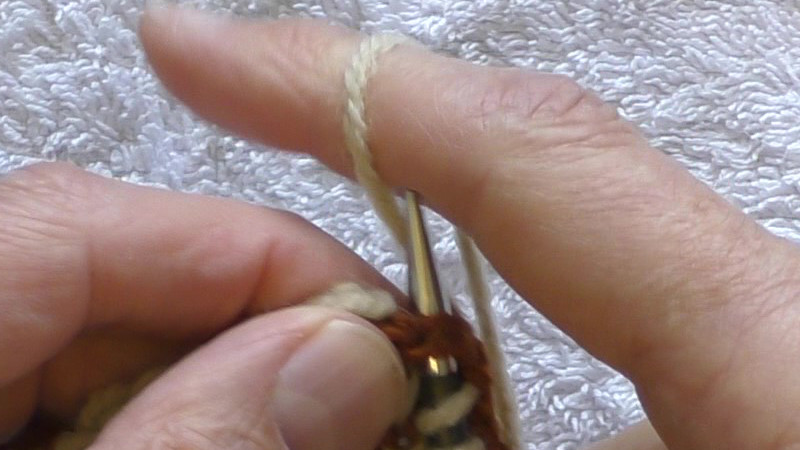
Hold the working yarn at the back of the steek. Wrap the yarn round the right hand needle as if to knit.
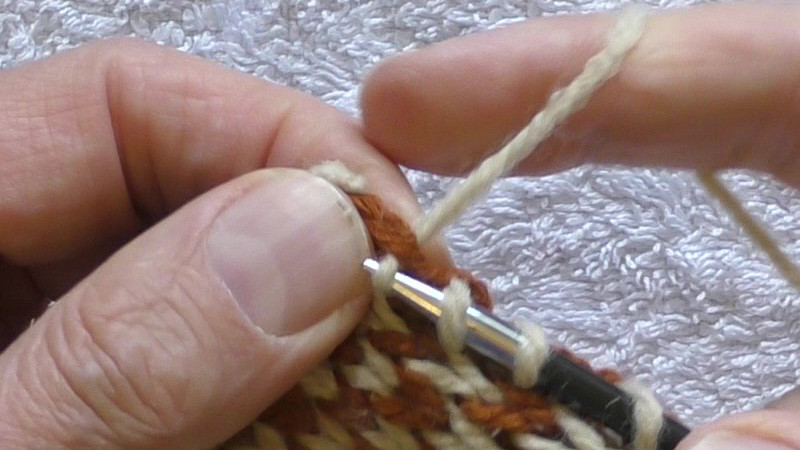
Pull the yarn through (behind the legs) to form the stitch.
Continue until all the stitches have been picked up.
Helpful links
There is a video T-torial on this topic (Pick-up stitches at a steek – T202003).
You can find instructions for picking up stitches in other contexts in these related atricles.
- Strategy for picking up stitches.
- Pick up stitches on a stockinette edge.
- Pick up stitches at a garter stitch edge.
- Pick up stitches at a cast-off edge.
- Pick up stitches on body of fabric.
Here are some links to additional sources of information.
